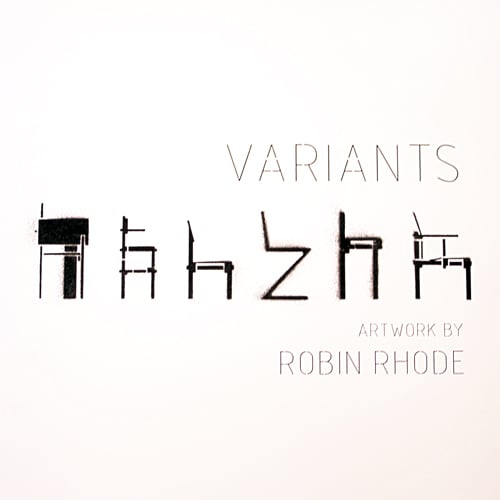In collaboration between Christian Marclay and the London Sinfonietta, some of the world’s most renowned contemporary musicians have been invited to stage performances, including new compositions and live improvisation sessions inside the White Cube. Each performance over the course of the exhibition will be recorded, pressed and screen-printed live inside the gallery. Performances take place each Saturday and Sunday of the show. Following live pressing on the VF Press by The Vinyl Factory and live screen-printing by Coriander each Thursday and Friday.
Limited Edition of 500 each
Hand-Screen printed by Coriander Studio
Live performances in conjunction with Christian Marclays exhibition.
Live recorded, pressed and screen-printed inside the White Cube
Price: £25 each
These records are available at The Vinyl Factory
 Live 1: Laurent Estoppey
Live 1: Laurent Estoppey
Laurent Estoppey divides his life between the United States and Switzerland. As a saxophonist, Estoppey plays in orchestras, founds many chamber music projects, performs many compositions created for him, but is also very involved in the improvised music scene. As a composer, he writes for concerts, sound installations, as well as movies (video art and documentaries). His influences come from the written musics of the 20th and 21st centuries (minimalism and spectralism, among others), the popular music of today (hip-hop, electro, rock) and increasingly the arts and contemporary movements (visual art, dance, literature…). Estoppey is the artistic director of Swiss ensemble baBel, which collaborates regularly with Christian Marclay, performing pieces such as Screen Play, The Bell & the Glass, Shuffle and Graffiti Composition in Switzerland and Italy.
 Live 2: David Toop
Live 2: David Toop
David Toop is a composer/musician, author and curator based in London who has worked in many fields of music, writing and listening practice. He has recorded Yanomami shamanism in Amazonas, appeared on Top of the Pops, exhibited sound installations internationally, and worked with artists including John Zorn, Evan Parker, Bob Cobbing, Derek Bailey, Ivor Cutler, Akio Suzuki, Elaine Mitchener, Lore Lixenberg, Alasdair Roberts, Luke Fowler, Henry Grimes, Rie Nakajima and Max Eastley. His published books include Ocean of Sound, Haunted Weather, and Sinister Resonance. He has released nine solo albums, including Screen Ceremonies, Black Chamber and Sound Body, and as a theorist and critic has written for many publications. Exhibitions he has curated include Sonic Boom at the Hayward Gallery, London, Playing John Cage at Arnolfini, Bristol, and Blow Up at Flat-Time House, London. His opera – Star-shaped Biscuit – was performed in Aldeburgh in 2012 and he is currently writing his sixth book - Into the Maelstrom: Improvisation, Music and the Dream of Freedom. He is University of the Arts London Chair of Audio Culture and Improvisation.
 Live 3: John Butcher
Live 3: John Butcher
Good Liquor Caused my Heart for to Sing sets out to expose and connect the resonating properties of empty spaces, namely the small interior geometry of a few of the Pub Crawl glasses and the enormous volume of the White Cube gallery. Small microphones are hung inside differently shaped glasses so that they will produce their personal feedback tones when hooked up to loudspeakers in the gallery. The behaviour of such sounds is extremely room dependent, and prone to unpredictability, especially when other sounds are present.
The London Sinfonietta players work with material carefully chosen to interact with the feedback in different ways. It's possible for their acoustic instruments to destroy certain feedback tones, produce curious interferences, phantom tones and unstable symbiotic harmonies. Emerging out of this flow are episodes that address more solid matters. Sometimes literally, in terms of the glasses, but now and then through glimpses of old English melodies that recall their human uses and consequences. John Butcher’s music ranges through improvisation, his own compositions, multitracked pieces and explorations with feedback and unusual acoustics/locations. Originally a theoretical physicist, he left academia for music after publishing a Ph.D. in 1982. He has since collaborated with hundreds of musicians, mostly involved with improvisation.







